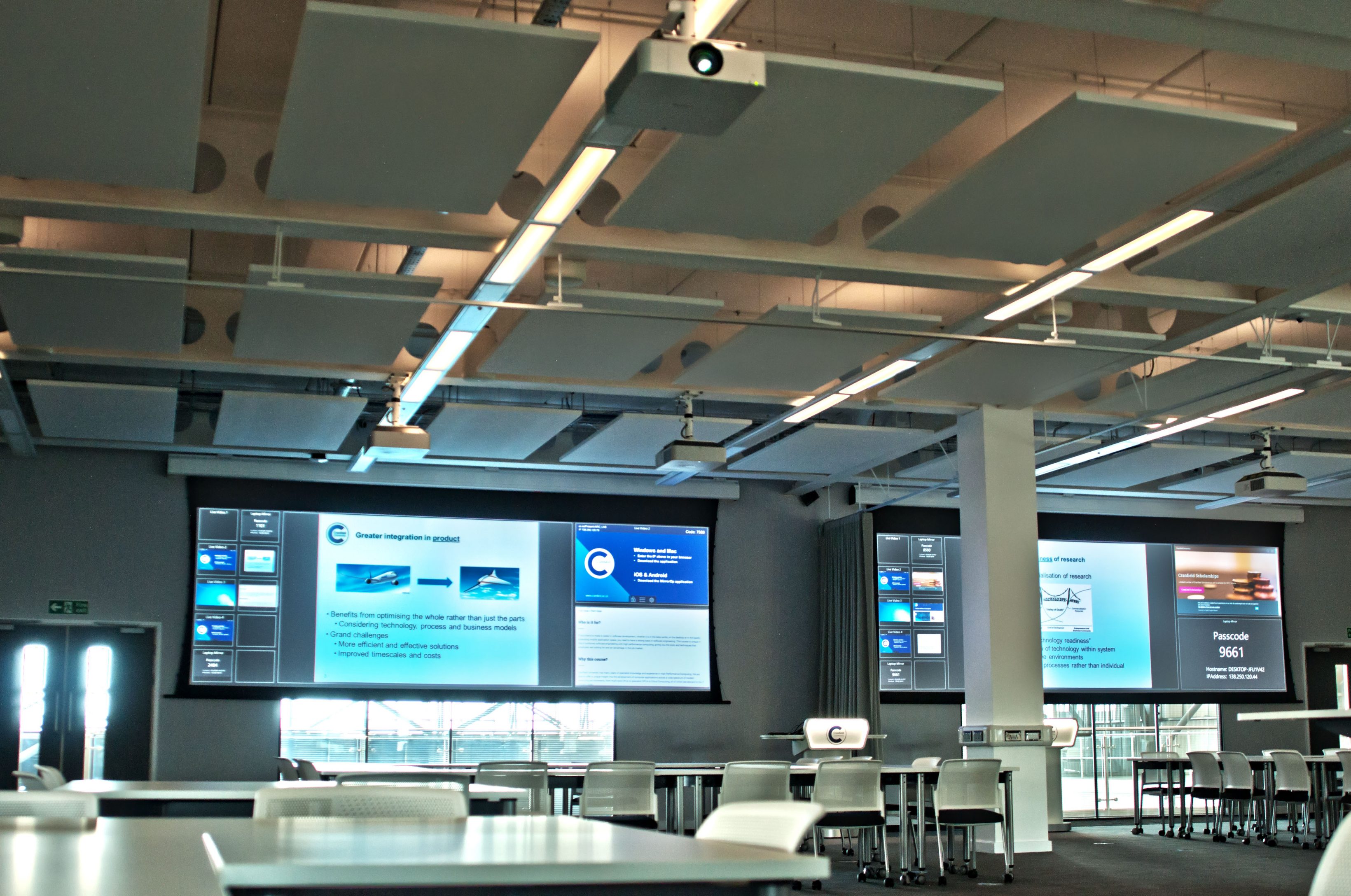
Previously we looked at the growing BYOD trend and the huge benefits and significant concerns it presents for companies. Here SteveMontgomery looks at some of the methods organisations are taking to get BYOD and AV system to interact, such as parallel networks and CYOD.
One security approach taken by many organisations is to implement a parallel AV network that is not connected to the main corporate IT network. This offers several advantages: it provides complete security by preventing connection between the two networks; permits the use of most AV devices on the AV network without concern; and separates out bandwidth-hungry AV processes, removing any possibility of video transmission from slowing data, telephony or corporate communications.
“Separate networks are an absolutely valid model, however it is not my choice of architecture and one I would look to recommend based only upon a full assessment of why it would be required,” says Simon Long, practice lead, technology innovation at PTS Consulting. “Dual networks aren’t as efficient as a single large network. Additional switches require rack space, power, UPS capacity, wiring and cooling and will ultimately cost more and perform less efficiently overall.
“AV systems are all becoming IP focused and, whether we like it or not, will continue to do so as technology progresses. Fear of adding devices to networks has largely subsided and IT managers will address requests to include devices with key operational questions, rather than a downright refusal to oblige. Rather we need to understand how and where BYOD and AV systems can interact with each other and with other devices on the network. Where they should be allowed to communicate freely and where they should be locked down is a key part of ensuring the solution is secure.”
The IT network should be configured to maximise its inherent security. The latest generation of WiFi access points and switches incorporate extensive security measures to prevent unauthorised access to network-connected devices from guest BYOD devices. This aids IT managers who are often reluctant to permit the connection of unknown and unmanaged devices onto the networks under their responsibility, because it means they lose visibility of what is happening.
There are different methods of enabling controlled access to network devices such as AV components. Network Access Translation (NAT) maps IP addresses across a network and can be set up by the system administrator to allow traffic to pass between devices with specific MAC addresses. Attached personal devices can be limited to dedicated AV devices and not have access to other, unauthorised equipment. As long as the AV device has a MAC address, some WiFi switches (the Cisco Meraki MS series is one) can enable access to them while limiting it to other connected devices.
This is all part of the design and configuration process of the system. There is a strong need for AV integrators to work closely with IT departments to ensure that BYOD works well with AV equipment. Early engagement is highly beneficial to the overall outcome. “Installers need to have the support of the IT teams within the organisation in order to deliver a really good user experience,” explains Botao Lin, director at Delta Products Corporation.
We need to understand how and where BYOD and AV systems can interact with each other and with other devices on the network
Simon Long, PTS Consulting
Although some companies refuse to permit employee-owned devices onto their systems, a new ‘choose-your-own-device’ (CYOD) programme is rapidly becoming an option for many. CYOD is characterised by businesses giving employees the choice of pre-determined and approved devices. Devices may either be paid for and owned by the employees, or held on the company’s books. This allows organisations to better manage and control the access of networks by employee devices and enables the wider system, including AV devices, to be integrated into the solution in a more efficient and effective way. According to Gartner, around 74% of enterprise companies in the US either already offer, or plan to offer, a CYOD programme for employees in the coming year, citing that BYOD programmes are difficult both to manage and to secure.
Future developments
In the future, the use of personal devices will further affect the deployment of AV. Users demand simplicity of connection and operation of corporate resources, including AV systems. In addition Botao Lin believes: “Touchpanel displays could become the central components of BYOD solutions. Not only do they provide screen sharing, but they have the potential to build a more comprehensive and versatile solution that includes videoconferencing, enhanced user interaction, and other functionality.”
Eddie Morgan, marketing manager of DisplayNote, also predicts that future developments will have an effect on BYOD policy and AV deployment: “Proximity detection that identifies individuals is highly likely to happen and all organisations should define their approach to BYOD and AV implementation to accommodate it. Mixed reality will also have a huge impact. Headsets, spectacles or mobile devices could be used to interact with mapped or virtual content. CIOs should be thinking about potential policies around security, privacy and cultural impact. Employees need to consider their virtual integrity: the lure and temptation of all of those things vying for our thoughts, time and money and balancing that with our daily working lives.”
Long believes that to understand how things are evolving, we should look at the historical situation: “If we jump back 15 years when IP telephony was in this exact same situation and parallel networks were being installed for IPT, it took only two to three years to become the norm for the two technologies to co-reside on the main corporate network, as skills and understanding of best practice for successful integration matured and became widespread. Those core skills, concepts and architectures are still valid today; we just need to apply to them to a different technology and community.”







